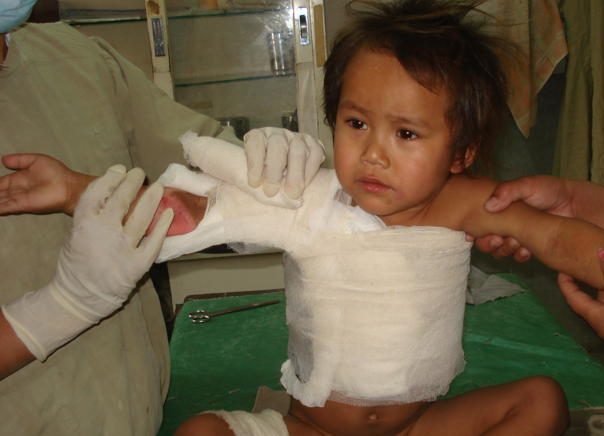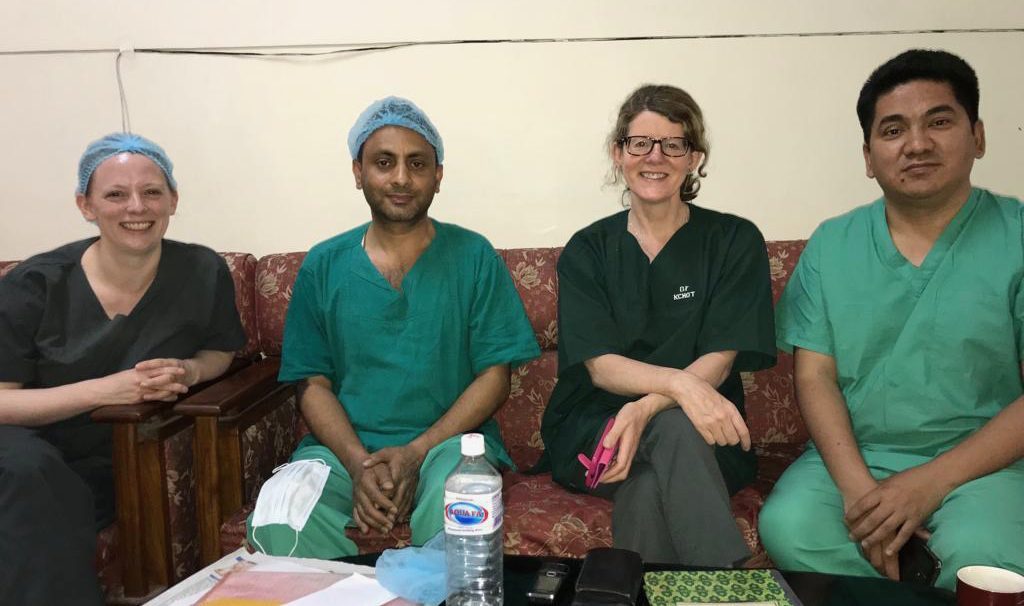The Problem
Although the incidence of burn injury in high income countries continues to reduce, burns remain a massive problem globally that affect over 11 million people each year – the equivalent of 30,000 people burned every day. 95% of burn injuries occur in poor countries and over 70% affect children, causing enormous suffering, death and lifelong disability.
Burns occur more frequently in low-resource settings as more people use fire to cook and heat their houses, clothing is more flammable and there is little awareness of the risk of electrical injury.
Tragically, a huge number of burn injuries lead to death and disability from infection, burn contractures and other complications that can be avoided through safe, cheap and effective treatments such as early skin grafting. This is also the situation in Nepal. Burns typically affect the poorest and most vulnerable members of society and the high cost of treating burns often force a patient and their family deeper into poverty.

The burns unit in Kanti is part of the department of paediatric surgery, which is extremely busy; there are approximately 3500 operations per year and 70 patients per day are seen in outpatients. There are 36 general paediatric surgery beds, 4 special care beds and 22 burn beds.
The paediatric surgeons are clearly working very hard in difficult circumstances and burns are only a small part of their total workload. The reasons why burn care is challenging in Nepal include a high number of patients, delayed presentation to hospital, lack of knowledge about how best to treat burns, insufficient therapy and nursing staff and lack of equipment.
Our Activities
Ms Sian Falder, STCML Trustee and burn surgeon in Alder Hey and Dr RP Chaudhary, paediatric surgeon in Kanti started the Kanti-Alder Hey Burns partnership in 2008, with funds from STCML. Dr Chaudhary visited Alder Hey in 2009 for one month and between 2010 – 2012, DFID funded a project (£28k) to support the partnership’s work. The BMA has also awarded two Humanitarian grants.
Read the Burns 2012 Report
Exchange Visits
All the paediatric surgeons in Kanti – Dr Pun, Dr Bijay Thapa, Dr Anupama Basnet, Dr Bal Basnet and Dr Ramana Rajkarnikar have all undertaken fellowships in Alder Hey (funded by STCML and the British Association of Plastic, Reconstructive & Aesthetic Surgeons).
Two nursing staff have visited Alder Hey.
Ms Falder and other Alder Hey staff have visited Kanti once or twice a year between 2009 and 2019. During these visits, we have supported hands-on care. We donated an electric dermatome (funded by STCML and Birkenhead school) which is a key piece of equipment for major burns and taught staff how to use it.
Read the Burns 2018 Report
Education
In addition, we have partnered with Interburns (an NGO for improving global burn outcomes) to teach Essential Burn Care. This is a day long course which teaches the basics of burn care from immediate admission through to later care, and stresses the importance of multi-disciplinary working, which is often counter to the hierarchical system in Nepal. It also emphases many points such as the importance of good nutrition, physiotherapy and recognition of the psychosocial effects of burn injury. Kanti staff have worked with other burn professionals in Nepal to become faculty and now teach this course to doctors, nurses and therapists in Nepali across rural Nepal as well as in Kathmandu. With Interburns, Kanti staff have now been teaching in other countries as well.

Advocacy
Funded by STCML, five Kanti staff attended an Interburns Burns Retreat in 2013 in Bangladesh. Following this, they were inspired to join with other Nepali burn professionals to start the Nepal Burn Society. This has continued to go from strength to strength and oversees the Essential Burn Care courses. The Ministry of Health has funded three of these courses.
